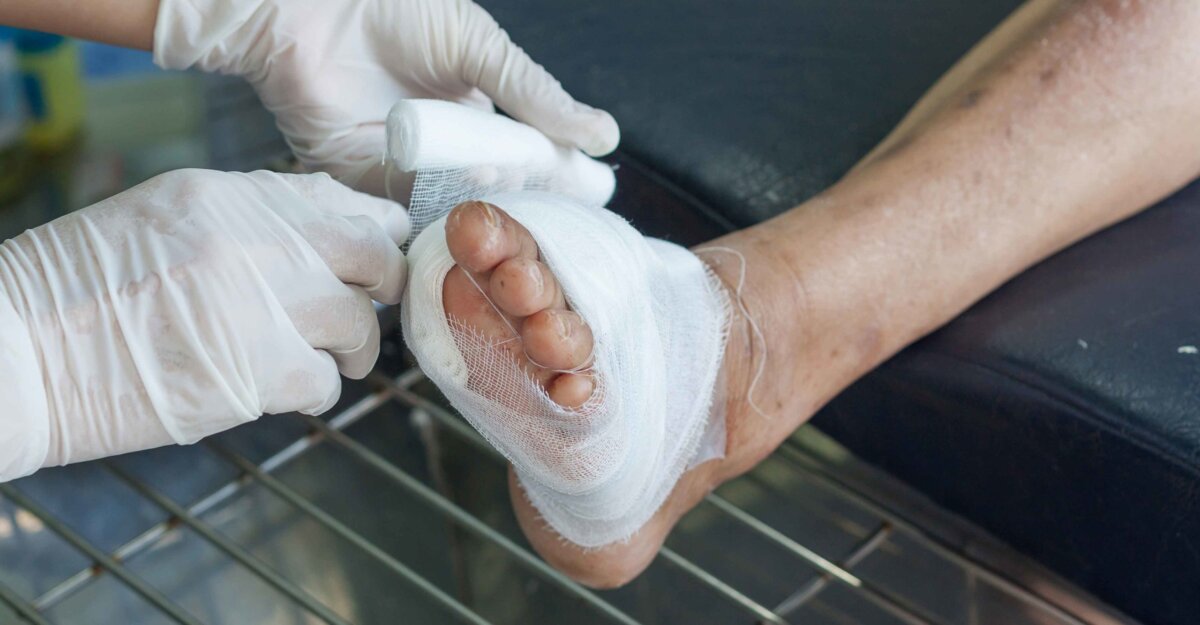For successful wound exudate treatment and healing, it’s vital to understand the 5 different types of exudate wounds and how much is present.
Exudate Definition: What is it?
Ooze. Pus. Secretion. The drainage that seeps out of wounds can go by many names, but as wound care clinicians, you know the technical term is exudate. This liquid is produced by the body in response to tissue damage and tells you all you need to know about the wound.
Dianna Dashner, DNP, FNP-C, WCC, CLNC, LLE, Senior Nurse Practitioner at ProMedica Skilled Nursing and Rehabilitation said it’s important to know the type and amount of exudate because this will direct the type of treatment.
“For example, the use of a calcium alginate necessitates moderate to heavy exudate,” she said. “If the wound has purulent drainage, you will want to thoroughly cleanse the wound to remove all the exudate and then culture the wound.” She added that if an infection is suspected and there is moderate to heavy drainage, a calcium alginate with silver may be a good choice for treatment. Her example highlights the significance that the amount and type of exudate makes in wound treatment.
Exudate can make wound healing a tricky endeavor. However, by identifying the types and quantities, you can recognize when the stage of healing is more serious and the right course of action to take.
Identifying the 5 exudate wound drainage types & differences
Exudate can be distinguished by certain physical characteristics, such as color and consistency. Knowing the differences between the following classifications can help you as you develop a treatment plan:
-
Serous exudate:
This type appears as a clear or pale yellow, thin, and watery plasma. During the inflammatory stage, serous is a regular part of healing, and small amounts are considered normal. However, if there are moderate to heavy amounts, this may indicate a high bioburden count.
-
Sanguineous exudate:
When fresh blood leaks from a wound, this is sanguineous drainage. This is most commonly seen in deep partial- and full-thickness wounds. In the inflammatory stage, a small amount is a normal occurrence. But if noted outside of this stage, sanguineous can be a result of trauma to the wound.
-
Serosanguineous exudate:
The most common type of secretion seen in wounds is serosanguineous. Appearing thin, watery, and pale red to pink in color, this occurs in the inflammatory stage. A small amount of this is considered normal in wound healing.
-
Seropurulent exudate:
When the secretion is thin, watery, cloudy, and yellow to tan in color, it is considered seropurulent. When this type is present, it is usually the first sign the body is fighting an infection, according to Dashner. She added that if an infection is present, honey with a foam border dressing can be used as a treatment method, although this depends on the size and location of the wound and the amount of exudate.
-
Purulent exudate:
Drainage that is thick, opaque, and tan, yellow, green, or brown in color is purulent. This is never a normal occurrence in the wound bed and is often associated with infection or high bacterial levels. Dashner stated that this type is considered the most severe because it can indicate an active infectious process and may need to be cultured.
What the exudate quantities reveal
Besides knowing the types of exudate, you should also be aware of the quantities present. This can be key for proper assessment and help you choose the appropriate dressing and treatment. The different levels include:
- None: If no drainage is present, this indicates the wound is too dry.
- Scant amount: This shows the wound is remaining moist, even though no measurable amount of secretion appears on the dressing.
- Minimal amount: Minimal drainage covers less than 25% of the bandage, but the wound dressings will be damp.
- Moderate amount: When secretion is moderate, the wound tissues are wet and saturate between 25% and 75% of the bandage.
- Large or copious amount: Classified as the most severe amount of exudate, large or copious amounts indicate that the wound tissue is filled with fluid, and more than 75% of the bandage is saturated.
Managing & healing exudate
Successful management of wound exudate involves assessing the wound area (and current dressings); monitoring the wound edge, peri-wound, and the characteristics and amount of secretion; and choosing appropriate dressings that promote moist wound healing. These actions give wounds the best chance for healing quickly and correctly (depending on the severity and complexity of the wound).
While moist healing is ideal, it’s also important to monitor for adverse effects from too much moisture. Excessive amounts of fluid in a wound can lead to problems such as maceration of the peri-wound or denudation. Challenges like these disrupt and delay the healing process, so ensure steps are taken to keep a balance of moisture in the wound bed.
In addition, it may not be known exactly how much drainage the wound is putting out for either the first few hours or even up to 24 hours after a patient is admitted, according to Dashner.

Dianna Dashner, DNP
“Dependent on the type of wound — diabetic or venous ulcer — and the location of the wound, a product may be chosen for heavy exudate and then be downgraded when the true amount is known,” she said.
It’s also vital to know if your patient is allergic to not just medications but fabrics as well, she said. “Patients who are allergic to wool for example may experience itching with Lanolin lotions. [And] those with shellfish allergies cannot receive IV contrast dyes, and in addition cannot use cadexomer iodine for wound infection,” she said.
Another important component is documentation. With each assessment of the wound or dressing change, you should note any changes — positive and negative — in the physical characteristics and amount of drainage.
While documenting, here are some additional factors to keep in mind:
- How much secretion was present on the old dressing and in the wound bed?
- How long was the previous dressing on?
- What type of dressing was previously used?
Dashner also added that it’s important to read the product information notes that are included in each product package. “Knowing your products, when to use them, how to use them as well as when not to use them will save time, money, frustration, and pain in the long term,” she said.
Wound exudate can have a large impact on the quality of life of your patients. By understanding the drainage types and amounts as well as implementing effective exudate management, you can reduce healing times, dressing changes, and the risk of infection, and enhance the quality of life for your patient.
Editor’s Note: This post was originally published in January 2016 and has been updated with new content.
Want to learn more about Wound Exudates and Wound Care?
Get Started →What do you think?

